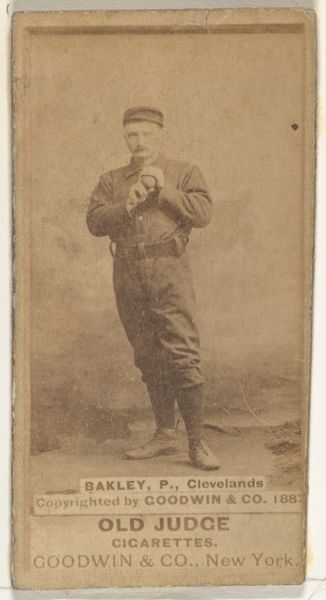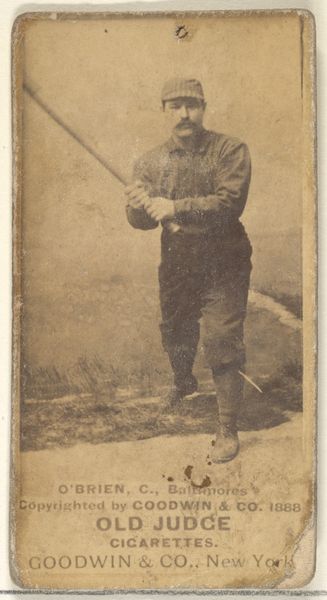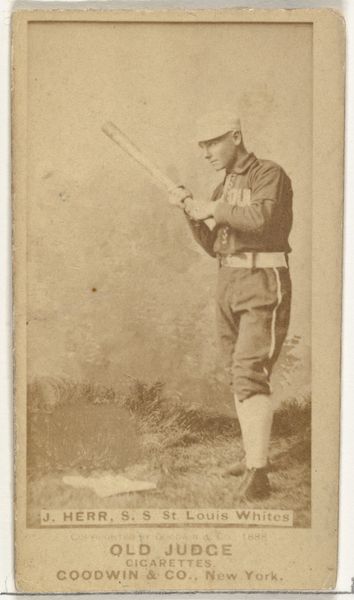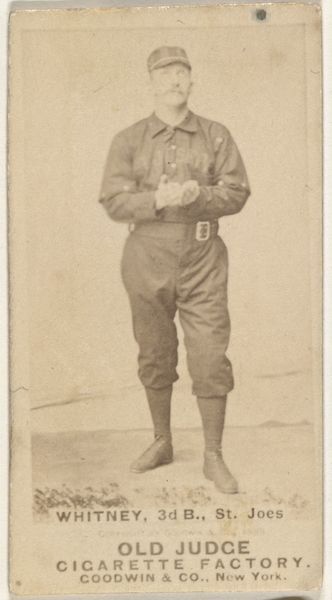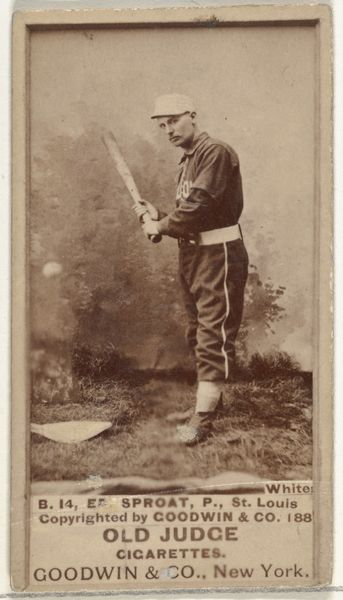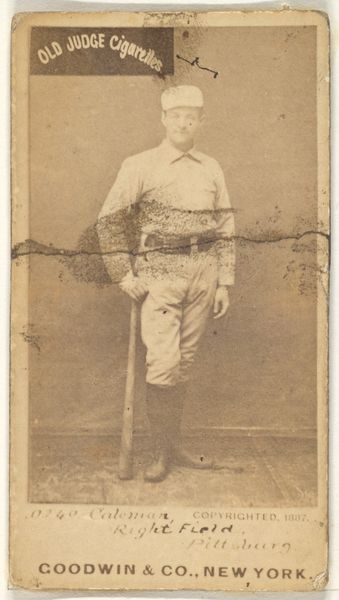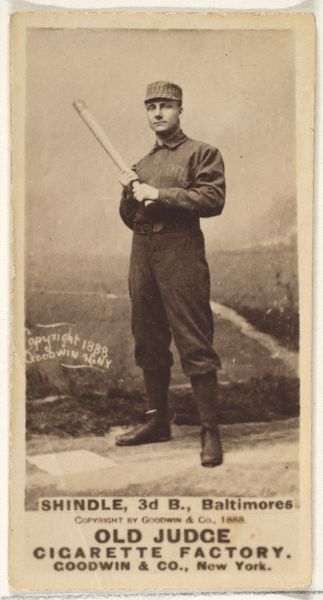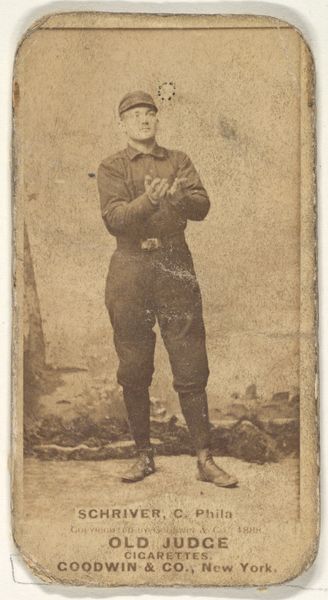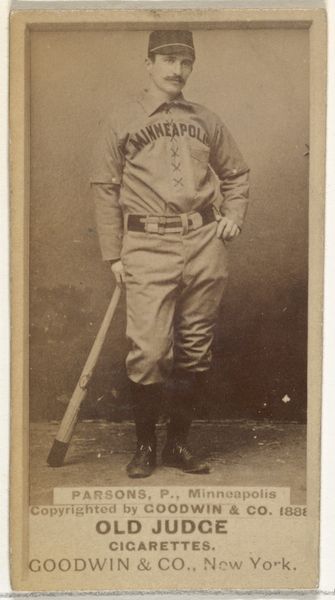
Edward Enoch "Jersey" Bakely, Pitcher, Cleveland, from the Old Judge series (N172) for Old Judge Cigarettes 1888
0:00
0:00
print, photography
#
portrait
#
african-art
# print
#
impressionism
#
baseball
#
photography
#
historical photography
#
men
#
athlete
#
realism
Dimensions: sheet: 2 11/16 x 1 3/8 in. (6.9 x 3.5 cm)
Copyright: Public Domain
Curator: Here we have "Edward Enoch "Jersey" Bakely, Pitcher, Cleveland," a print dating back to 1888. It was created by Goodwin & Company as part of the "Old Judge" series, used for advertising Old Judge Cigarettes. Editor: It's immediately striking how this object operates as both an intimate portrait and an advertisement. There is something almost austere in its presentation, a snapshot from a different era of sport, labor, and leisure. Curator: These cards, printed on albumen paper, offer fascinating insight into the burgeoning baseball culture of the late 19th century. The visual rhetoric certainly reflects broader cultural attitudes around athleticism and celebrity at the time. Consider the positioning of Bakely; he's idealized as both a strong athlete and a symbol of masculine stoicism. How does this intersect with gender dynamics of the era? Editor: Right. The photograph’s original context, however, seems to also hint at a bigger story here, that this seemingly harmless baseball card acted to further intertwine consumer culture and popular culture—tobacco use became ingrained in the image of an everyday baseball player. Considering the material's inherent qualities, the glossy paper feels deliberately chosen to convey sophistication. The photographic process itself then serves to industrialize portraiture and making accessible depictions of idols to a much broader consuming public. Curator: The image also speaks to notions of spectacle. Bakely isn't just a ballplayer; he's a performer commodified for mass consumption. Moreover, analyzing the company responsible for its distribution exposes underlying power dynamics and capitalistic intent that shaped our understandings of heroism in sport. This artwork certainly functions as a signifier of commercial manipulation masked under sporting enthusiasm. Editor: I find the photograph also interesting from the standpoint of labor practices involved. Who took the photograph? Where was the paper sourced from? It forces us to consider labor hierarchies in art production and commodification that extend well beyond simply viewing a figure holding a baseball bat. It makes us ask, who benefited from this kind of portraiture and celebrity endorsements, and what materials were used to reproduce them on this scale? Curator: This image offers rich points of inquiry when thinking critically about cultural histories. Examining it within frameworks of social class, gender identity, racial diversity is essential in comprehending how we internalize sports celebrity ideals today. Editor: Agreed. Exploring it, through its photographic elements and its production materials leads me to rethink what exactly gets archived and remembered, while bringing labor involved into full view, as well.
Comments
No comments
Be the first to comment and join the conversation on the ultimate creative platform.
